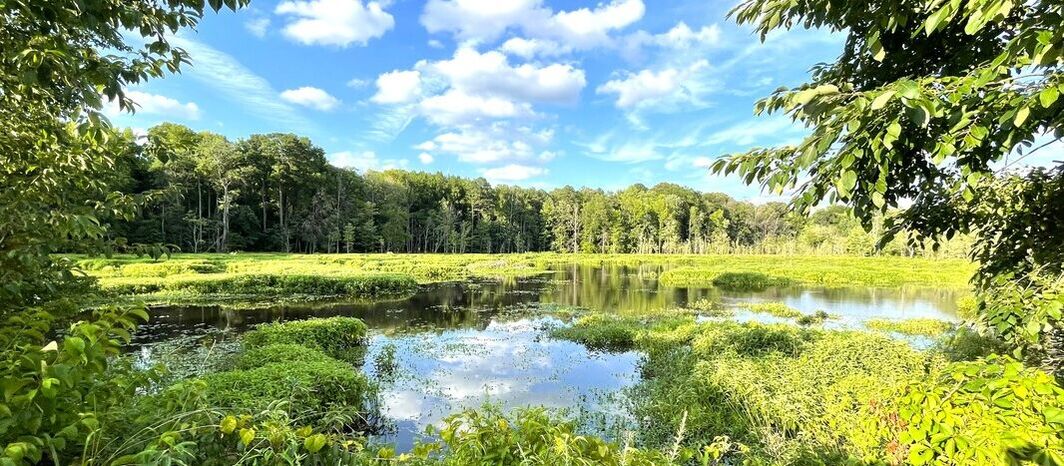|
By John Dorney, ECWA Board Member In honor of World Wetlands Day, celebrated annually on February 2nd, let’s delve into the current state of wetlands in the Ellerbe Creek Watershed. A Quick Overview of the Watershed Situated between downtown Durham and the Eno River Watershed, Ellerbe Creek flows west to east, merging with Goose Creek on its way to Falls Lake. While the eastern part of the watershed is rural with scattered development, the western and central parts of the watershed are urbanized. Unfortunately, approximately 80% of the watershed is developed, resulting in impervious surfaces like sidewalks, roofs, and driveways that contribute to the impaired water quality of Ellerbe Creek. In the latest “State of Our Streams” evaluation, an annual communications campaign to city residents about the health and cleanliness of the city's creeks and rivers conducted by the City of Durham, Ellerbe Creek received a “D” (66 out of 100) for water quality. It received this low score because of:
Importance of Wetlands in the WatershedProtecting wetlands in the Ellerbe Creek Watershed is crucial for its health. Wetlands, which retain water long enough for soil saturation to support wetland vegetation, play a pivotal role by:
Unfortunately, protecting these wetlands won’t be so easy as there isn’t an accurate map or count of wetlands within the watershed. Thankfully, the North Carolina Department of Transportation (NCDOT) is working on an accurate field-based wetland map for the state. However, with the recent U.S. Supreme Court ruling, wetland protection will still be in jeopardy. History of Wetlands in Durham Historically, wetlands in our area have been drained and filled for development within the Ellerbe Creek Watershed and downtown Durham. Additionally, many smaller streams near downtown were culverted—tunneled through pipes to facilitate construction. Larger streams, including Ellerbe Creek, were dredged and channelized to rapidly remove stormwater from urban areas to reduce local flooding. Doing this created levees, or built embankments, that separated the creek from its floodplain. Beavers play a huge role in Durham's wetland history. After being eradicated for decades, beavers have started to return and rapidly expand in the area. They have created large expanses of wetlands along the smaller streams throughout the watershed. As nature’s engineers, beavers are a critical component in maintaining a healthy watershed. Our Work to Protect Wetlands The City of Durham is actively working on the South Ellerbe Restoration Project, a large constructed wetland project. This project was conceived in the early 2000’s by the late Kathi Beratan when she was a Board member and volunteer for the Ellerbe Creek Watershed Association (ECWA) along with Jesse Allen for her Master’s Project at Duke University. ECWA has conducted extensive water quality monitoring downstream along with Duke University to be able to scientifically show the benefit of this facility to South Ellerbe Creek.
As federal and state wetland protections shrink due to recent US Supreme Court cases, action in land protection is becoming more critical. Many of ECWA’s nature preserves protect existing wetlands. Alongside protecting wetlands on nature preserves, ECWA regularly collaborates with Durham City Council and City of Durham staff to increase protections for wetlands already owned by the City, including the wetlands at the Ellerbe Creek Waterbird Colony. Finally, we are also working with the NCDOT and the City to more fully protect wetlands which no longer have federal protection under the Clean Water Act. Our work to protect wetlands in Durham cannot be done alone. It’s going to take all of us working together to advocate for increased wetland protection and to maintain the wetlands we already have. Join us in celebrating World Wetlands Day with us by sharing the importance of wetlands in Durham. Comments are closed.
|
About UsECWA's vision is a living creek connecting human and natural communities in Durham. Through land acquisition, collaboration with the city, and public education, we hope to create a Durham where residents can bike or walk across the watershed and stop at local businesses and nature preserves along the way. Archives
February 2024
Categories
All
|
ECWA
Ellerbe Creek Watershed Association
Office: 904 Broad St Durham, NC 27705 | Mailing: PO Box 2679 Durham, NC 27715
919.698.9729 | [email protected]
919.698.9729 | [email protected]
Copyright ©ECWA

 RSS Feed
RSS Feed
